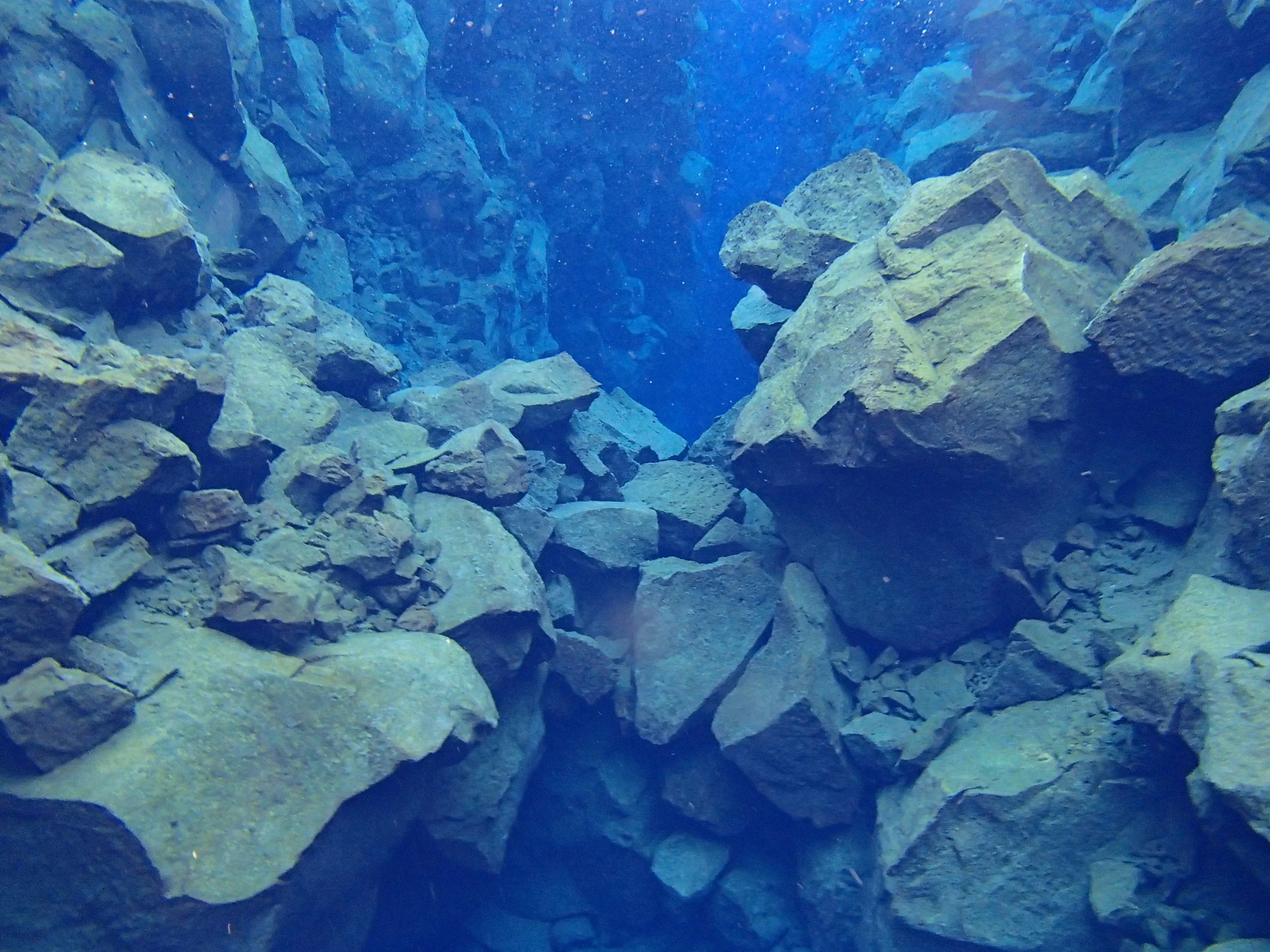Among other things, Iceland is an amazing place to visit because of its impressive geologic features. When traveling around the Ring Road, one can see lava fields, green rolling hills, tall mountains, moon-like black sand, lakes, ocean, rivers, and more all within a four hour span. Although Iceland has been formed by a plethora of events, the main factor in its creation has been its position on the mid-Atlantic Ridge in the Atlantic Ocean. The mid-Atlantic Ridge is the largest mountain range on the planet, invisibly stretching over 10,000 underwater miles. It is also the boundary of North American and Eurasian plates, which have been moving apart for over one hundred and fifty million years. This movement has caused a continuous flow of magma from the Earth’s core into the ocean, forming the Ridge, and Iceland itself. On a yearly basis, the plates continue to move approximately 2 centimeters further apart. As a result of this movement, in 1789, this pressure was released in the area now known as Þingvellir National Park with the creation of a series of rifts (fissures) in the surrounding region. After it was created by seismic activity, the main rift immediate filled with water from an underground aquifer, and is now known as the Silfra Fissure.
Blue Lagoon Geothermal Spa
In the middle of a huge lava field, halfway between Keflavik International Airport and Reykjavik lies Iceland’s most popular tourist attraction, the Blue Lagoon Geothermal Spa (or simply “the Blue Lagoon”). While a majority of Iceland is visually stunning, with tall snow-capped mountains, waterfalls, and green expanses, this portion of the country looks more like the moon. The Blue Lagoon as well looks like something from another planet with its iridescent blue shade and steaming hot water. While Iceland is the world’s leader in geothermal energy because of its position on a number of volcanoes, and does have a number of natural geothermal pools, the Blue Lagoon is not one of them.
Iceland's Abandoned Farmhouses
It is without question that Iceland is the land of ice, snow, and beautiful wilderness expanses. But what people do not know about Iceland is that it is also a land where myth and magic intersect with reality. While Iceland is a sophisticated modern country, it is also a place where long-held traditional beliefs about fairies, ghosts, and elves (Huldufólk – “hidden people”) are still accepted and believed. While there are numerous Icelandic tales that are still believed, the strongest beliefs are reserved for the Huldufólk. Even through the twentieth century, and into the twenty-first century, road construction has been diverted – or altered to avoid disturbing the Huldufólk. While such beliefs may seem odd to many people, all one has to do is journey outside of Reykjavik in order to see that Iceland is a place where such things could exist.
Jokulsarlon Glacial Lagoon
There are some places in the world that have to be seen to be believed. In such places, descriptions such as “amazing”, “fantastic”, and “awesome”, inevitably fall short. These are the places in the world where words fail, and the eyes are left with a visual phantasmagorical feast. These are the destinations that provide once in a lifetime experiences; and these are the destinations that make travelling worthwhile and inspirational. One of these destinations is the Jökulsárlón Glacial Lagoon in Iceland.
Seljalandsfoss
Iceland is unquestionably the land of ice and fire. It is also the land of the Northern Lights, the land of stunning vistas, and among many other things, the land of waterfalls. Although Iceland has many amazing waterfalls, it has only one waterfall that visitors and hikers can walk behind. That waterfall is Seljalandsfoss, and is perhaps the most well-known, or depending on whom you talk to, the most beautiful waterfall in all of Iceland.
Hallgrimskirkja Church
One of the little known facts about Reykjavik is that it is a pedestrian friendly city. Even though the weather precludes pedestrian excursions during certain times of the year, it is a city that invites excursions by foot on days or nights when the conditions are at least passable. While much of the city’s restaurants and bars are clustered on or around Laugavegur Street, the city’s most visible – and iconic piece of architecture is the Hallgrimskirkja Church.
Skogafoss
In addition to its myths and legends, Iceland is also the land of spectacular waterfalls. These waterfalls are some of Europe’s most powerful because of the precipitation that the island receives along with seasonal glacial and snow melt. One of the largest and most powerful of these falls is Skogafoss, which is located slightly outside of the town of Skogar in Southeast Iceland. Skogafoss means “forest waterfall” in Icelandic; and while there are no trees around the waterfall today, the waterfall itself is a spectacular classic rectangular waterfall that cascades down the former sea cliffs. At twenty five meters wide (75 feet) and sixty meters (180 feet) in height, the fall is an impressive sight that can be seen from a far distance.








